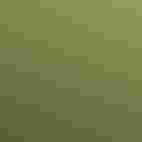Olive-backed Pipit
At a Glance
Although it forages mostly on the ground like other pipits, this Asian species also regularly perches in bushes and trees. It is a rare migrant in western Alaska, mostly in the outer Aleutians. It has also occurred as a very rare stray in Nevada and California.
All bird guide text and rangemaps adapted from by Kenn Kaufman漏 1996, used by permission of Houghton Mifflin Harcourt Publishing Company. All rights reserved.
Category
Perching Birds
IUCN Status
Least Concern
Habitat
Fields, Meadows, and Grasslands, Shrublands, Savannas, and Thickets, Tundra and Boreal Habitats
Behavior
Direct Flight, Flitter, Rapid Wingbeats
Range & Identification
Description
6" (15 cm). Similar to American Pipit but has sharper face pattern, with white spot behind ear-coverts. Olive-brown back has faint streaks; buff on chest, with bold black stripes. Legs pale.
Size
About the size of a Robin, About the size of a Sparrow
Wing Shape
Long, Pointed, Tapered
Tail Shape
Notched, Square-tipped
Songs and Calls
Call, often given when flushed, a high, rough speez, much lower than Red-throated Pipit.
Call Pattern
Falling, Flat, Undulating
Call Type
Buzz, Hi, Trill, Whistle
Sign up for 爆料公社's newsletter to learn more about birds like the Olive-backed Pipit



